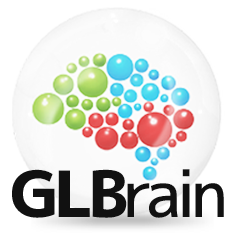As every parent knows, raising a child comes with its own set of joys and challenges. When a child is diagnosed with Autism Spectrum Disorder (ASD), families often feel overwhelmed trying to navigate therapy options, appointments, and schedules. Fortunately, we’re living in a time when innovative care solutions are more accessible than ever—including the rise of Virtual ABA Therapy, which is changing the landscape of autism support.
Rather than requiring families to travel or adjust their routines around therapy clinics, modern telehealth services bring effective, research-based autism care directly to your home. Providers like Autism Therapy through Beyond Infinity ABA are using secure technology to deliver the same quality therapy—virtually—with impressive results.
What Makes Virtual ABA Therapy Different?
Applied Behavior Analysis (ABA) therapy is one of the most trusted interventions for children with autism. Traditionally delivered in person, it helps children develop communication skills, manage behaviors, and improve social interactions through structured techniques.
What sets Virtual ABA Therapy apart is its delivery method—not its effectiveness. Sessions happen online, usually via a video conferencing platform, and are guided by licensed professionals like Board Certified Behavior Analysts (BCBAs) and Registered Behavior Technicians (RBTs).
This digital shift isn’t just about convenience—it’s about accessibility, adaptability, and empowering parents to take a more active role in their child’s development.
Why Families Are Choosing Telehealth ABA Over Traditional Therapy
While in-person therapy still plays a vital role in many families’ lives, the appeal of virtual therapy continues to grow. Here's why:
1. No More Commutes or Waiting Rooms
Between school, work, and daily responsibilities, time is a precious resource. Virtual ABA removes the burden of driving to a clinic, dealing with traffic, or rearranging your day just to make an appointment. Sessions happen in your own home, where your child is most comfortable.
2. Greater Consistency for Better Results
Children thrive on consistency. Virtual therapy reduces the risk of canceled sessions due to bad weather, illnesses, or transportation issues. That means your child stays on track and builds momentum in their learning.
3. More Involvement for Parents and Caregivers
One of the most underrated benefits of virtual sessions is how naturally they invite parent participation. Rather than being in a waiting room, you’re right there in the session—observing, learning, and even participating when needed. It builds confidence and helps you support your child between sessions.
4. Personalized Plans in a Familiar Environment
Children often respond best in their own space. With therapy happening at home, therapists can tailor sessions to fit into the child’s daily environment. That could mean practicing routines in the kitchen, role-playing social scenarios, or building skills using favorite toys and activities.
Is Online ABA Therapy Right for Every Child?
Not every therapy style fits every child, and that’s okay. Virtual ABA therapy is ideal for many kids, particularly those who:
Are comfortable using tablets or computers.
Can focus and engage through online interaction.
Have support from a parent or caregiver during sessions.
Live in remote areas with limited access to in-person ABA centers.
If a child has severe behavioral challenges or needs hands-on support, a hybrid model that blends virtual and in-person therapy might work best. The key is choosing a provider who evaluates your child’s needs honestly and creates a plan that feels doable for your family.
Inside a Virtual ABA Session: What to Expect
One of the most common questions parents ask is, “What does a virtual ABA session actually look like?”
Here’s a breakdown:
Initial Connection: The therapist checks in with the parent and child, reviews goals, and talks through any updates since the last session.
Interactive Learning: Using games, visuals, and real-time reinforcement, therapists work on behavior goals—anything from communication skills to daily routines.
Real-Time Feedback: Therapists coach parents or caregivers throughout the session, offering feedback and modeling techniques that work.
Tracking and Adjusting: Each session includes careful data tracking to monitor progress and adjust strategies if needed.
It’s structured, personalized, and designed to make your child feel at ease—right at home.
How Beyond Infinity ABA Makes the Process Easy
Families working with Beyond Infinity ABA often express relief at how simple and supportive the entire process is. From your first consultation to ongoing care, they walk with you every step of the way—whether you're new to ABA therapy or transitioning from in-person sessions.
Their licensed BCBAs take time to understand your child’s strengths, struggles, and personality before crafting a customized treatment plan. Through their Virtual ABA Therapy services, Beyond Infinity ABA brings together professional care and real-world practicality. That means you’ll never feel like you’re doing this alone.
Here’s what sets them apart:
Flexible Scheduling: Sessions are arranged to fit your routine.
Therapist Matching: Your child is paired with a provider who matches their communication style and energy.
Progress Transparency: You’ll always know what your child is working on—and how they’re improving.
Parent Coaching: You’ll receive training and support so therapy extends beyond the screen.
Getting Started Is Easier Than You Think
One of the best parts about choosing virtual ABA is how quickly you can get started. All you really need is:
A device with a camera and internet access (laptop or tablet preferred).
A quiet space at home with minimal distractions.
A willingness to engage and collaborate with your therapist.
A child who is open to learning and interacting digitally (with guidance!).
Most families report that once the first session happens, the rest becomes second nature.
Looking Ahead: A More Inclusive Future for Autism Therapy
Virtual ABA therapy isn’t just a short-term trend. It’s a long-term solution that’s helping more families than ever—especially those in rural communities, underserved areas, or with busy schedules.
The core principles of ABA remain the same, but now they’re delivered with the flexibility and compassion that today’s families deserve. It’s a step toward a more inclusive and accessible future where autism therapy meets your child where they are—literally.
Whether you're just beginning this journey or looking for a new path forward, know that support is out there. It’s real, effective, and just a click away.
FAQs: Virtual ABA Therapy for Autism
Q1: Does virtual ABA therapy really work?
Yes! Virtual sessions can be just as effective as in-person ones for many children, especially when there's active parent involvement and consistent scheduling.
Q2: How long are the sessions?
Sessions usually range from 1 to 3 hours depending on the child's age, needs, and attention span. Your provider will help you decide the best session length.
Q3: What if my child gets distracted easily?
Distractions are common at first, but therapists are trained to redirect and adapt. Parents also receive coaching to help manage attention during sessions.
Q4: Will my insurance cover virtual ABA?
Most insurance plans that cover in-person ABA also cover telehealth ABA services. The Beyond Infinity ABA team can help verify your coverage.
Q5: Can we switch to in-person therapy later?
Absolutely. Many providers offer hybrid models, allowing you to shift to in-person or blended care based on your child’s evolving needs.
Q6: How soon can we begin?
Once your intake and insurance paperwork are complete, services can often begin within a few days to a couple of weeks.
Q7: Do I need to be present during sessions?
Yes—especially for younger children. Parents or caregivers play a key role in supporting and reinforcing what’s learned during therapy.



Share the News